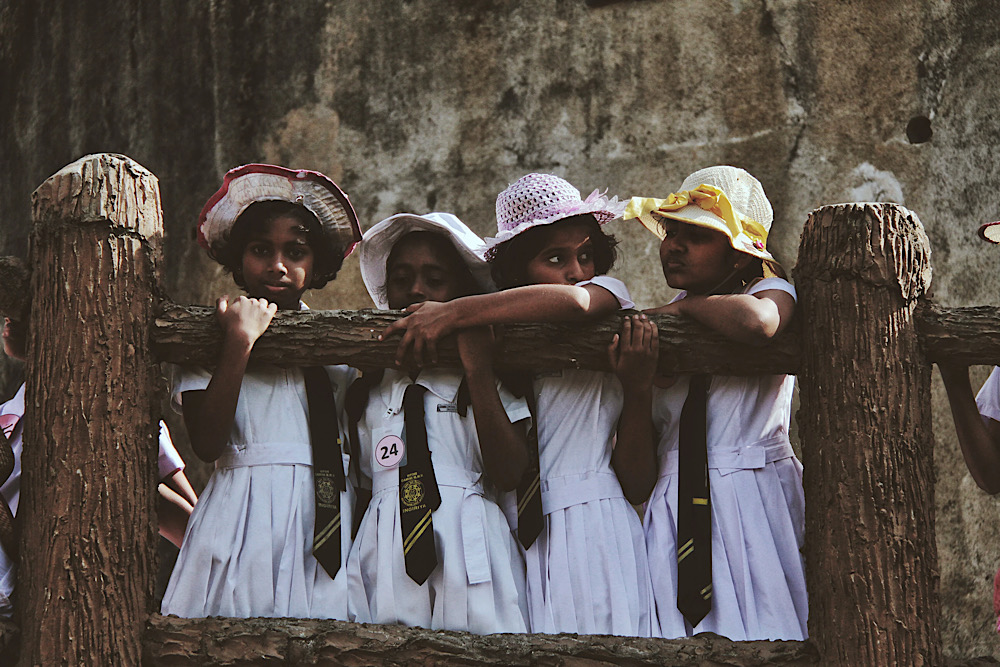Crisis and poverty: over 410,000 malnourished girls in Sri Lanka
This is what a study covering the period 1990-2022 published by The Lancet indicates. Sri Lanka ranks second worse after India, but the latter shows an improvement in recent years. The Ministry of Health is considering "food baskets" for those suffering from moderate acute malnutrition (MAM).
Colombo (AsiaNews) – Girls and young women in Sri Lanka are among the most underweight in the world, suffering from a form of malnutrition and living conditions that put their very survival at risk, this according to a study covering more than 30 years (from 1990 to 2022) published by the prestigious British medical journal The Lancet on 29 February.
The research confirms the persistence of the food emergency that Sri Lanka’s recent crises have not certainly improved. The island nation is, in fact, second only to India for dangerously underweight girls aged 5 to 19. More than 410,000 or 16.4 per cent of the total age group are malnourished or underweight.
The study looked at Body Mass Index (BMI) to determine if a child is underweight, classifying them as stunted, wasted or both.
The data on wasting is significant because this process risks endangering a child’s very life, too thin for their height and with weak immunity.
In the long run, this can cause problems to or delays in development, and, in the case of severe wasting, increase the risk of death.
The research is the work of the NCD Risk Factor Collaboration, a global network of health scientists in cooperation with the World Health Organisation (WHO).
Nutrition and lifestyle specialists Damayanthi Ranatunga, Senarath Mudalige, and Dhanushka Liyanage told AsiaNews that "being underweight is weighing less" than the average of one’s age and height cohort.
The “child may be stunted or wasted, or living with both conditions which endanger his or her life from childhood to adulthood.” Most children who “are underweight, wasted or stunted” because of “inadequate micronutrients, the result of undernutrition.
Specifically, “A child deficient in micronutrients lacks vitamins and minerals essential for body functions such as production of enzymes, hormones and other substances necessary for growth and development.”
According to studies by the United Nations Children's Fund (UNICEF), WHO, the International Bank for Reconstruction and Development, and the World Bank, stunted children “may never attain their full possible height.”
There are also consequences for the brain as well, so that some children "may never develop to their full cognitive potential.’’
South Asia has the highest prevalence of wasting among children of any sub-region in the world. In 2022, more than 25 million children under the age of five were suffering from wasting.
In addition, according to the research data, "unlike Sri Lanka, underweight data dropped in India in the 33 years since 1990.”
Medical consultants Rohan Gamage and Sajeewani Ratnayaka add that "even before the economic crisis" that hit Sri Lanka in recent years, "malnutrition was a public health issue in the country.”
About, “40 per cent of children aged 6-12 years were too thin due to lack of nutrients. This is a common issue in rural as well as urban areas. Many parents are unable to provide nutritious meals to their children.”
And “This situation may be worse in the future due to exorbitant prices of essentials, including vegetables and fish. Some children are unable to have even one egg a day.”
According to senior officials, the Ministry of Health is set to provide "food baskets" for those suffering from moderate acute malnutrition (MAM) as soon as UNICEF provides the second tranche of funds in early 2024.
“Although, there was a plan earlier to provide nutrition bars to children with the assistance of a private biscuit manufacturer, the [Ministry’s] Nutrition Department noted that a nutrition bar would not effectively provide the necessary nutrients to a child experiencing MAM.”
For this reason, “the authorities have decided to provide a balanced meal, which will include necessary nutrients designed to address dietary requirements of children while contributing towards eliminating childhood malnutrition.”
To this end, “The food basket will include recommended food categories,” which “will be distributed through public health midwives, who will list out the families with children facing MAM.”
30/12/2016 16:13
29/12/2016 15:28
24/10/2022 15:30







.png)










